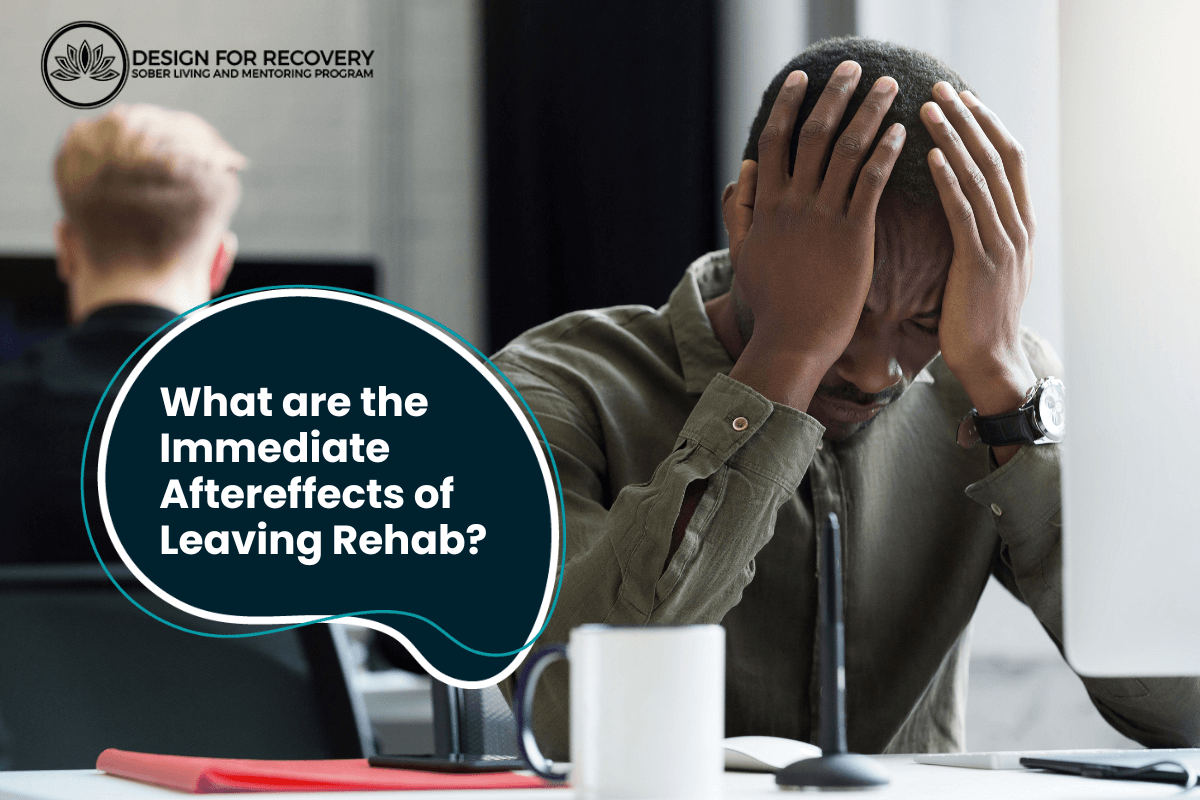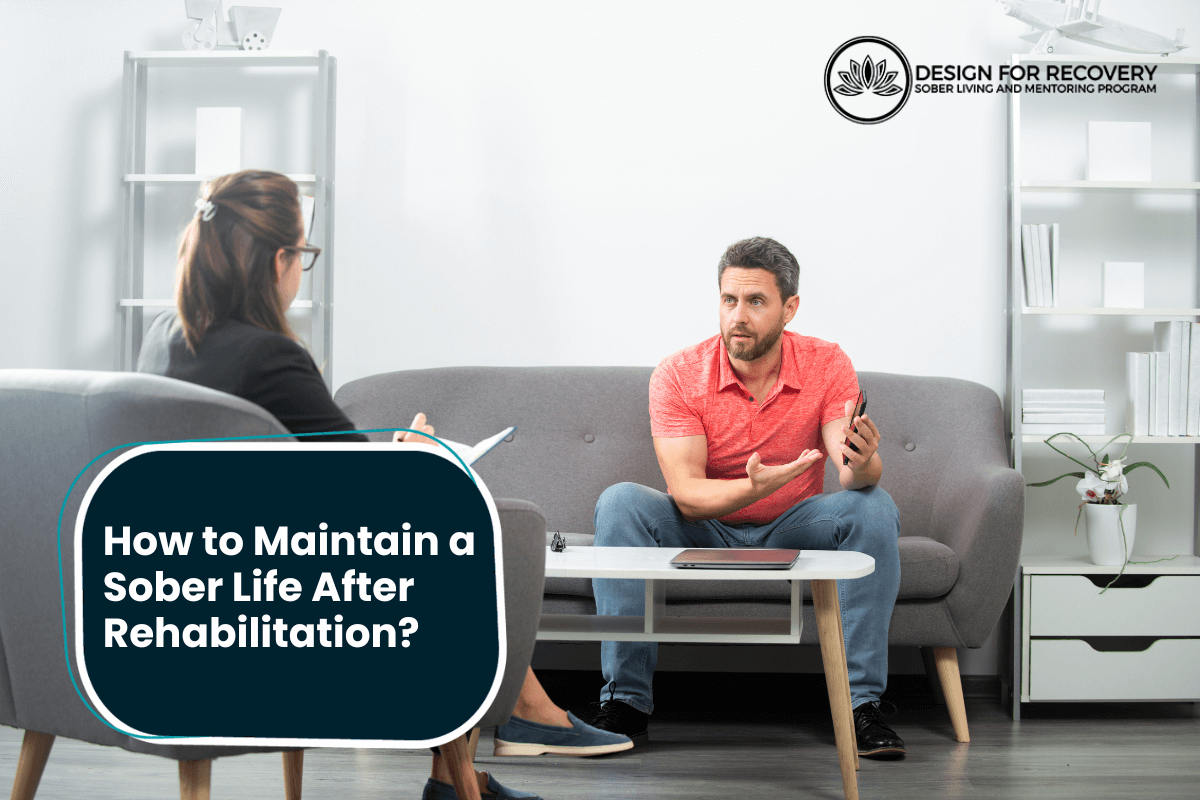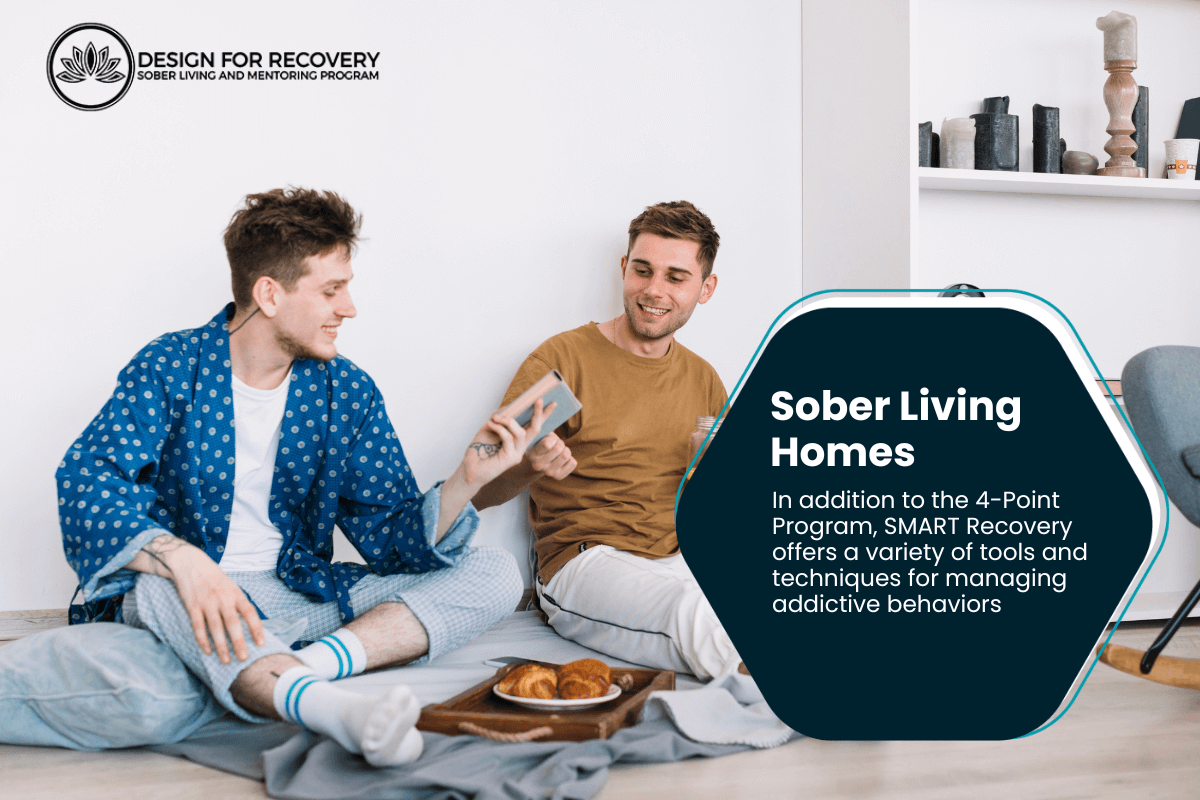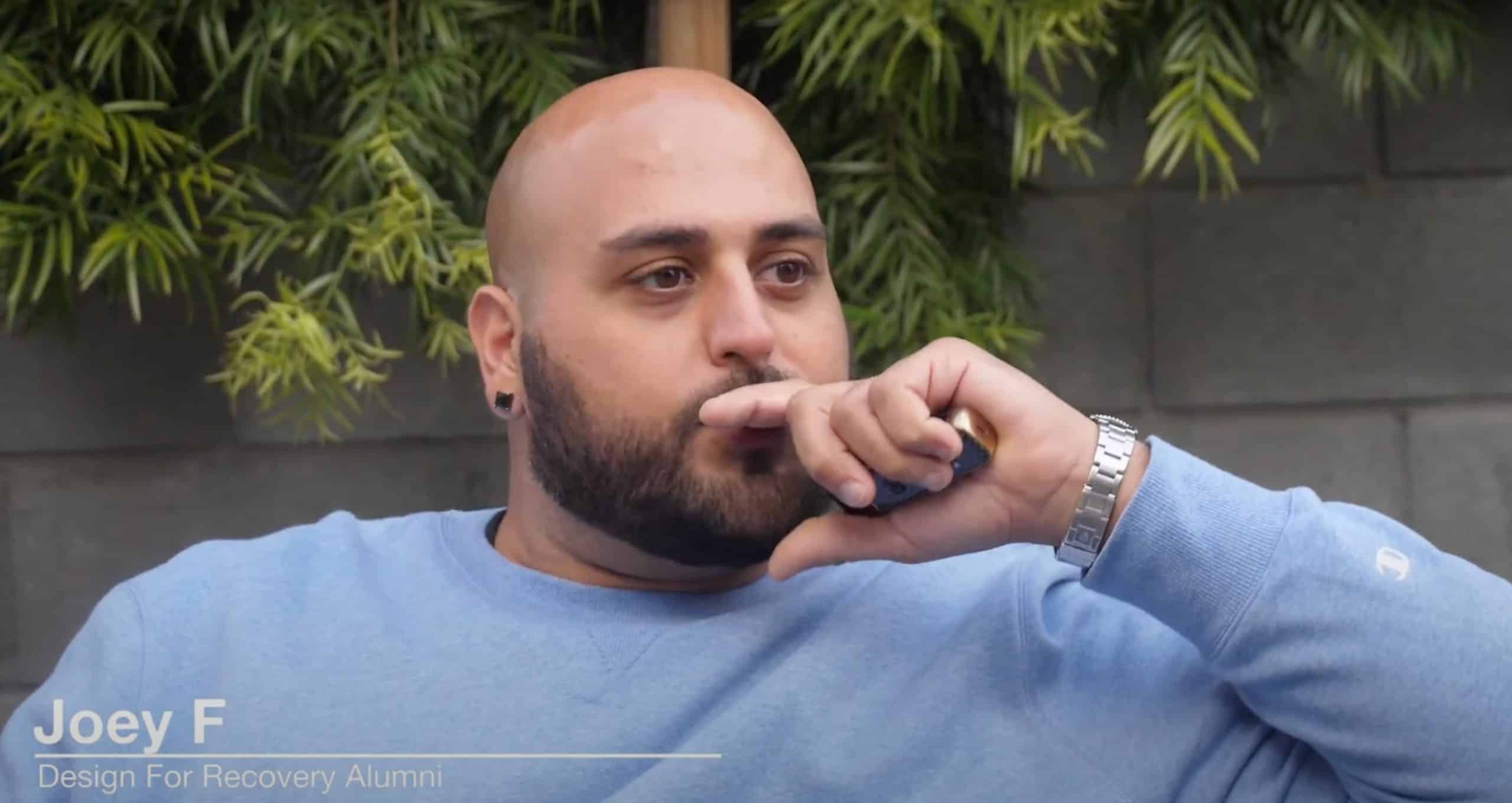Rehabilitation is a long and difficult process, but the rewards of recovery are immeasurable. The rehabilitation journey can be an uphill battle for those with physical or mental health issues. But with proper care and guidance, individuals can get back on their feet and live fulfilling lives again.
As important as it is to go through rehab, it is just as important to understand what life will be like after rehab. Life after rehab can be intimidating, but with the right mindset and a determination to succeed, individuals can learn to adjust and thrive in their new normal.
On This Page:
What are the Benefits of Completing Rehab?

Completing a rehabilitation program for drug abuse can positively impact your life. It allows you to learn how to manage your addiction and develop strategies for addiction relapse prevention. Here are some of the key benefits:
Physical Benefits
Rehabilitation programs use various methods to help you improve your physical health. This could include exercise, nutrition counseling, and lifestyle changes. Additionally, many rehabs also offer medical care to address any underlying physical issues that may have been caused by substance abuse.
By completing a comprehensive rehabilitation program, you can reduce the severity of withdrawal symptoms associated with addiction. This can make it easier to stick with your recovery plan and stay on track for a successful long-term outcome.
Psychological Benefits
Rehabilitation programs focus heavily on addressing the underlying psychological problems that may have contributed to your alcohol addiction. This includes therapy, such as one-on-one counseling or group counseling. During these sessions, you can learn valuable skills and strategies for coping with stress without relying on substances. This can help you develop better communication skills and set healthy relationship boundaries.
You also feel a sense of pride and accomplishment when you complete a rehabilitation program. This can be especially beneficial for those who have struggled with addiction for a long time, as it helps boost self-confidence and can provide a renewed sense of hope.
Social Benefits
Rehabilitation programs also offer social benefits. You can learn how to build and maintain healthy relationships with family members, friends, loved ones, and coworkers. Additionally, you’ll gain access to career resources that can help you establish a meaningful life after rehab. This could include job-seeking skills such as resume writing or interviewing techniques. Completing a program could also open up new opportunities for social activities that don’t involve drugs and alcohol.
You can gain greater control over your life by participating in a rehabilitation program. You’ll learn how to recognize triggers and develop healthy coping mechanisms for dealing with them without giving in to cravings. This can help you take responsibility for your recovery and give you the confidence to live a fulfilling and successful life without drugs and alcohol
What are the Immediate Aftereffects of Leaving Rehab?

Leaving a rehabilitation (rehab) facility can be a significant transition, and individuals often experience a range of immediate aftereffects when recovering from drug or alcohol addiction. Here are some common immediate aftereffects of leaving rehab:
Emotional Landscape:
Mixed Emotions: It’s common to experience mixed emotions after leaving rehab. These emotions may include relief from completing the program, apprehension about maintaining sobriety, excitement about the prospect of a fresh start, and fear of relapse or facing triggers.
An Adjustment Period: Living outside the structured rehab environment can be challenging. Individuals may have become accustomed to a routine in rehab, and leaving that behind can create a sense of disorientation.
Practical Aspects:
Discharge Plan: Rehab programs typically provide a discharge plan that outlines the steps to follow after leaving rehab. This plan may include ongoing therapy, support group meetings, medication management, and other elements to help maintain sobriety. Understanding and adhering to this plan is crucial for successful recovery.
Acceptance of Temptations: Recognizing that temptations and triggers will continue to exist in the outside world is an important aspect of early recovery. Learning how to cope with these temptations and develop healthy strategies for managing stress is essential. This is important if you wish to live a healthy lifestyle after surviving alcoholism and drug dependence.
It’s important to remember that the early days and weeks after leaving rehab can be challenging, but with the right support, coping strategies, and a commitment to recovery, individuals can successfully navigate this period and build a fulfilling, substance-free life. Staying connected to a supportive community and seeking professional help when needed are key components of maintaining sobriety in the long term. Try talking to a mental health professional after you’ve ended your rehab program at the treatment facility.
How to Maintain a Sober Life After Rehabilitation?

Continuing care, often referred to as aftercare, is a crucial component of many aspects of life, including healthcare, addiction recovery, education, and more. It is essential rather than optional for several reasons:
Sustained Progress: Aftercare helps individuals maintain and build upon their progress. Whether recovering from an illness addiction or learning a new skill, people are more likely to regress or lose the benefits of their initial efforts without ongoing support and guidance. A treatment provider can ensure your family, friends, and loved ones become part of your sustained progress support system.
Preventing Relapse: In addiction recovery, aftercare is vital in preventing relapse. It provides ongoing support to help individuals cope with triggers, cravings, and life stressors that might otherwise lead them back to substance abuse. Consistent follow-up care helps individuals develop the skills and strategies to stay sober.
Health Maintenance: Aftercare is essential to ensure patients follow through with their treatment plans. Skipping follow-up appointments or neglecting prescribed medications can lead to complications or recurring medical issues. Aftercare appointments help catch potential problems early and make necessary adjustments to treatment plans.
Education and Skill Development: In education and professional development, ongoing learning and skill-building are critical. After completing a course or training program, continued learning and practice are necessary to retain knowledge and improve skills. Without aftercare, individuals may forget what they’ve learned or lose proficiency in their field.
Emotional and Psychological Support: Life transitions, traumatic experiences, and mental health challenges often require ongoing support. Aftercare can include therapy, counseling, or support groups that provide individuals with a safe space to discuss their feelings and receive guidance on managing emotions and stress.
Community and Connection: Aftercare programs often foster community and connection. Being part of a supportive network can boost motivation, reduce feelings of isolation, and provide a sense of belonging, all essential for long-term success in various areas of life.
If you don’t know how to break the news about your progress and continuing care, here are five strategies for telling people you are in recovery.
Different Types of Continuing Support:
Continuing support can take various forms to meet the specific needs of individuals seeking help and recovery. Here are some different types of continuing support commonly used in various contexts, including addiction recovery:
Individual Therapy: Individual therapy, also known as counseling or psychotherapy, involves one-on-one sessions with a trained therapist. This type of support provides a personalized and confidential environment for individuals to explore their challenges, work on coping strategies, and address underlying issues contributing to addiction or other concerns. Therapists use various therapeutic approaches, such as cognitive-behavioral therapy (CBT), dialectical-behavior therapy (DBT), or motivational interviewing, to help clients achieve their goals.
Regular Check-ups with Addiction Specialists: Regular appointments with addiction specialists, such as addiction counselors or medical professionals, are crucial for monitoring progress and adjusting treatment plans. These specialists can guide medication management, address physical and psychological health concerns, and offer ongoing support for maintaining sobriety. These are especially important when you are trying to recover from alcoholism.
12-Step Programs like AA or NA (Alcoholics Anonymous or Narcotics Anonymous): 12-step programs are peer-led support groups that follow a structured set of principles and steps to help individuals recover from addiction. These programs provide a supportive community of people who share their experiences, strengths, and hope. Attendees work through the steps with the guidance of a sponsor and attend regular meetings to stay connected and accountable.
Alternative Support Groups (e.g., SMART Recovery): Besides 12-step programs, alternative support groups like SMART Recovery (Self-Management and Recovery Training) exist. These programs emphasize a scientific and evidence-based approach to recovery. SMART Recovery teaches practical skills and tools to help individuals manage cravings, cope with triggers, and make positive life changes.
The choice of continuing support options depends on an individual’s preferences, needs, and the nature of their recovery journey. Many people find that combining these support types is most effective in helping them achieve and sustain their recovery goals.
Sober Living Homes

Sober living homes play a crucial role in recovery from drug and substance abuse by offering a structured and supportive environment for individuals transitioning from addiction treatment facilities to their regular lives. Their purpose and role in recovery are significant, and they provide several benefits to residents:
1. Transition Phase: Sober living homes are transitional between formal addiction treatment (such as inpatient rehab or outpatient programs) and returning to everyday life. This step is vital because it allows individuals to practice the skills and strategies they learned in treatment in a real-world setting.
2. Structured Environment: Sober living homes provide a structured, drug-free environment. Residents are expected to adhere to specific rules and guidelines that promote sobriety, including abstaining from drug and alcohol use. This structure helps individuals establish and maintain a routine that supports their recovery.
3. Peer Support: Residents of sober living homes are typically individuals who are also in recovery. This shared experience creates a strong sense of camaraderie and mutual support. Residents can lean on each other for encouragement, understanding, and accountability. Peer support is often considered one of the most valuable aspects of sober living.
4. Gradual Adjustment: Returning to regular life after addiction treatment can be overwhelming and expose individuals to old triggers and temptations. Sober living homes provide a buffer between the controlled environment of treatment and the challenges of daily life. This gradual adjustment helps individuals build confidence and resilience while minimizing the risk of relapse.
5. Accountability: Sober living homes often have rules and expectations that residents must follow. These rules may include regular drug testing, curfews, mandatory attendance at support group meetings, and participation in house chores. These measures help ensure that residents remain accountable for their sobriety and responsibilities.
6. Safe and Supportive Community: Sober living homes foster community and belonging. Residents often form close bonds and can rely on each other during challenging times. This sense of community can combat feelings of isolation and loneliness, common triggers for relapse.
7. Focus on Recovery: By residing in a sober living home, individuals can prioritize their recovery without the distractions and temptations of their previous living situations. This focused environment allows them to concentrate on building a strong foundation for lasting sobriety.
8. Relapse Prevention: Sober living homes provide a safety net that can help prevent relapse. If a resident does experience a setback or is at risk of relapsing, the house staff and fellow residents can offer immediate support and intervention.
9. Life Skills Development: Many sober living homes offer training and workshops to help residents gain practical skills for independent living. These skills may include budgeting, job searching, cooking, and time management, essential for successful reintegration into society.
Overall, sober living homes are essential to the addiction recovery continuum. They bridge the gap between treatment and the challenges of returning to everyday life, providing individuals with the necessary tools, support, and structure to maintain sobriety and build a solid foundation for a healthier, substance-free future.
Adjustments in Social Life
Adjustments in Social Life during the recovery process are often crucial for individuals striving to maintain sobriety. Here are some important aspects of these adjustments:
Peer Support: The importance of those who’ve walked in your shoes
Peer support plays a vital role in the recovery journey. Connecting with individuals who have experienced similar struggles and challenges can provide a sense of understanding and empathy that is often difficult to find elsewhere. Peer support groups and meetings, such as those in 12-step programs like Alcoholics Anonymous or Narcotics Anonymous, offer a safe and non-judgmental space where individuals can share their experiences, strength, and hope. These connections can be incredibly encouraging and help individuals stay on the path to recovery by reinforcing their commitment to sobriety.
Cutting Out Old Friends or Activities: Keeping away from potential triggers
One of the most challenging but necessary adjustments in recovery is distancing oneself from old friends and activities associated with substance use or other destructive behaviors. These old connections and environments can serve as powerful triggers for relapse. It’s often essential to establish boundaries and make the difficult decision to cut ties with individuals who do not support your recovery efforts or who may actively encourage substance use. This can be a painful process, but it’s crucial to creating a safer and healthier social environment that supports sobriety.
Embracing New Hobbies: Finding new passions and pursuits
Recovery is about abstaining from substances and building a fulfilling and meaningful life without addiction. Embracing new hobbies and interests can be a transformative aspect of this process. Exploring new passions provides a healthy outlet for creativity and self-expression and can also help fill the void left by the absence of substance use. Whether taking up a sport, pursuing artistic endeavors, or engaging in volunteer work, new hobbies can help individuals rediscover a sense of purpose and joy in life, making it easier to move forward without relying on drugs or alcohol.
Daily Habits & Routines
Establishing a new routine in recovery is pivotal for creating stability and reducing triggers that may lead to relapse. This revamped daily structure provides predictability and allocates time for essential activities like work, self-care, therapy, and recreation. It also involves the conscious avoidance of situations or people that can trigger cravings or old habits, fostering an environment conducive to recovery. Furthermore, cultivating healthy habits such as regular exercise, balanced nutrition, sufficient sleep, and stress management becomes integral to supporting physical and mental well-being, thereby fortifying the individual’s resilience against addiction’s pull.
Moreover, recovery isn’t just about physical and emotional sobriety. Physical sobriety involves abstaining from substances, while emotional sobriety delves into understanding and managing the emotional and psychological factors contributing to addiction. Achieving emotional sobriety entails addressing underlying issues through therapy, support groups, and self-help strategies, ultimately equipping individuals with healthier coping mechanisms and emotional management skills. Both physical and emotional sobriety are essential components of a holistic recovery, providing the tools necessary for long-term success and well-being while minimizing the risk of relapse.
What are the Best Strategies for Long-Term Addiction Recovery?
The best strategies for achieving long-term addiction recovery encompass a holistic approach that addresses various aspects of an individual’s life. Here are some key strategies:
1. Aftercare Services: How they help and why you should use them
Aftercare services, such as individual therapy, support groups, and check-ups with addiction specialists, are instrumental in maintaining recovery. They offer ongoing support, guidance, and accountability, helping individuals navigate the challenges of daily life while staying sober. Aftercare services provide a safety net for those in recovery, enabling them to sustain progress, address potential setbacks, and optimize their long-term outcomes.
2. Secondary Care Addiction Services: Definition and Importance of Secondary Care
Secondary care addiction services refer to extended treatment programs that follow primary treatment (e.g., inpatient rehab or intensive outpatient programs). These programs offer a structured and supportive environment, similar to sober living homes, but with more intensive therapy and monitoring. Secondary care is crucial for individuals who require additional support and time to address underlying issues, build coping skills, and reinforce their commitment to recovery.
3. Recognizing and Addressing Triggers: Personalized strategies to stay on track
Understanding and identifying triggers is essential for long-term recovery. Triggers can be people, places, emotions, or situations that prompt cravings or the desire to use substances. Personalized strategies for recognizing and addressing triggers may involve cognitive-behavioral techniques, mindfulness practices, and creating an avoidance plan. Developing effective coping mechanisms for dealing with triggers is critical for preventing relapse.
4. Assertiveness Training: Learning to say “No” without guilt
Assertiveness training equips individuals with the skills to communicate their needs, set boundaries, and say “no” to situations or people that could jeopardize their recovery. It helps individuals build self-confidence and assert themselves healthily and respectfully. Learning to say “no” without guilt is essential for resisting peer pressure or external influences that may lead to substance use.
5. Self-Care: Techniques and routines to ensure mental, physical, and emotional well-being
Self-care is a cornerstone of long-term recovery. It involves practices and routines that promote mental, physical, and emotional well-being. Self-care techniques may include regular exercise, proper nutrition, sufficient sleep, relaxation and stress management, hobbies and interests, meditation, and seeking emotional support through therapy or support groups. Self-care helps individuals maintain a balanced and fulfilling life while reducing the risk of relapse due to stress or emotional turmoil
Finding the Help You Need
Navigating the path to recovery is an essential but challenging journey, especially for those battling addiction. Design For Recovery, a beacon of hope, stands ready to assist those on their lifelong journey to recovery. Our structured sober living homes provide daily support and a nurturing environment for men wrestling with substance abuse, mental health, and impulse control disorders. If you or a loved one need guidance and support on the path to sobriety, please don’t hesitate to contact us.
Guenzel N, McChargue D. Addiction Relapse Prevention. [Updated 2023 Jul 21]. In: StatPearls [Internet]. Treasure Island (FL): StatPearls Publishing; 2023 Jan-. Available from: https://www.ncbi.nlm.nih.gov/books/NBK551500/
Laudet, A. B., Savage, R., & Mahmood, D. (2002). Pathways to long-term recovery: a preliminary investigation.Journal of psychoactive drugs, 34(3), 305–311. https://doi.org/10.1080/02791072.2002.10399968
McKay J. R. (2021). Impact of Continuing Care on Recovery From Substance Use Disorder. Alcohol research : current reviews, 41(1), 01. https://doi.org/10.35946/arcr.v41.1.01
Inanlou, M., Bahmani, B., Farhoudian, A., & Rafiee, F. (2020). Addiction Recovery: A Systematized Review. Iranian journal of psychiatry, 15(2), 172–181.
Laudet A. B. (2011). The case for considering quality of life in addiction research and clinical practice. Addiction science & clinical practice, 6(1), 44–55.








